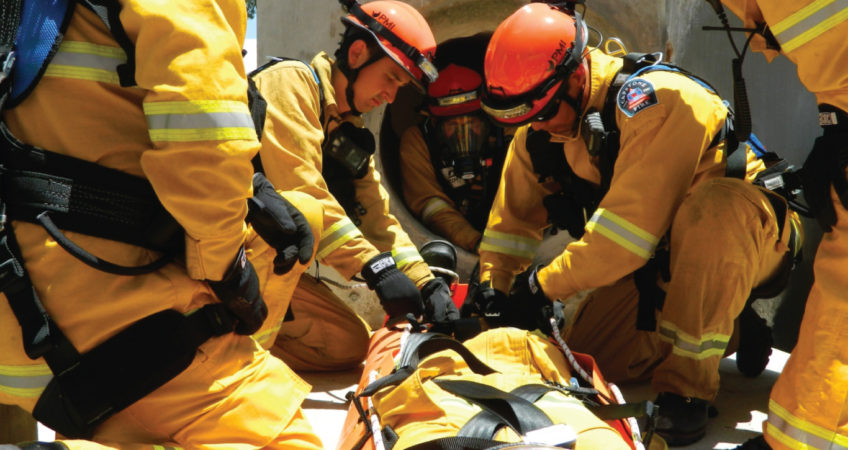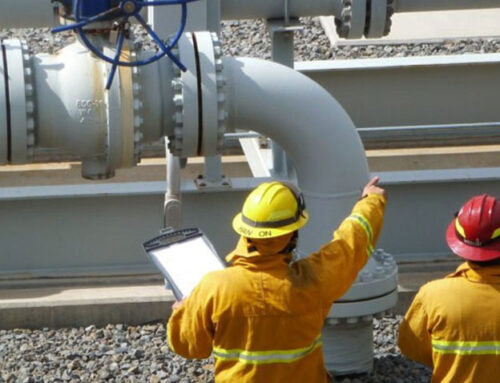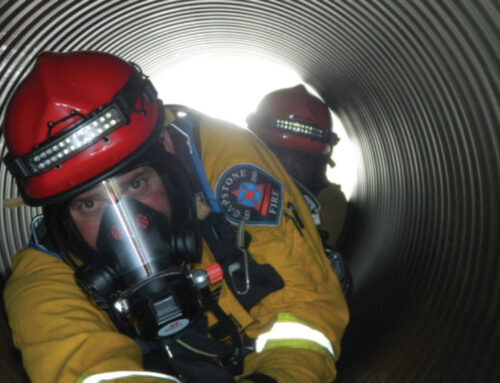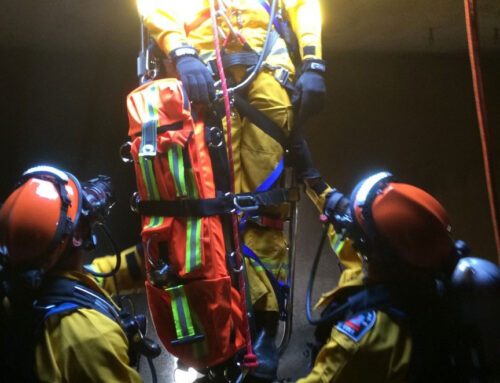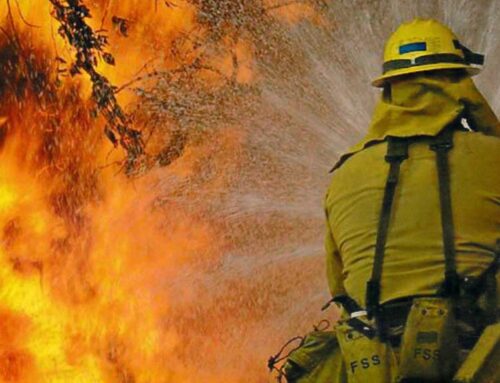Every employee has a right to a safe work environment. The Occupational Safety and Health Administration (OSHA) is the regulatory agency protecting workers in the workplace. One of the most important regulations covers employees working in confined spaces. The regulation for employers to understand is OSHA 29 CFR 1910.146. Working in confined spaces is more dangerous than other working environments.
Confined spaces are defined as:
- Large enough space for an employee to enter fully and work.
- The space is not designated for continuous occupancy.
- The area has limited entries or exits.
Permit required confined spaces are defined as:
- Space contains a hazardous atmosphere or has the capability of containing a hazardous atmosphere.
- The space can potentially engulf the worker.
- The workspace has a configuration capable of asphyxiating or trapping an employee by the walls converging inwardly or by the floor sloping in a downward direction and tapering into a smaller cross section.
- Spaces contain any other serious hazards or safety issues identifiable.
These definitions cover a lot of work spaces, including, but not limited to:
- Vaults
- Tanks
- Silos
- Dikes
- Storage Bins
- Pits
- Vessels
- Underground Utility Tunnels
- Other Similar Areas
The OSHA regulation has a chart an employer can use to determine whether the confined space must be permitted, but, again, a company has the responsibility to ensure employees have a safe work environment. This means if there is a question about the space, it is best to get expert advice. If the employer does not have the trained personnel and equipment required to meet all the confined space rescue regulations, then hiring a qualified service company is highly recommended.
This short article does not cover all the requirements of 1910.146. It does highlight some of the important training requirements and equipment needed to ensure this law is being followed. This can help a company determine the best way to implement these safety rules.
Written Program
Every employer must maintain a written program for each confined work space location. These written programs must include:
- How a company prevents unauthorized entry into the confined space area.
- How the space is tested for atmospheric conditions before entry and how it is monitored during entry.
- The program must ensure the area is tested for these conditions: oxygen level, gas or vapors which are combustible and toxic gases.
- The establishment and implementation on how the atmospheric conditions are eliminated or controlled during entry.
- Identify each employee job duties during entry.
- What safety equipment is being provided to each employee for safe entry and maintaining this equipment?
- Written job description of the employee stationed outside confined space and monitors the safety issues for the duration of the work.
- How the company coordinates the operations when more than one employee from different companies are working in the space.
- Implementation of how emergency services are contacted, or rescue personnel are summoned.
- How the company prevents unauthorized or untrained personnel from attempting rescue.
- Have an established implementation of permits for how the space is prepared, issued, used and cancelled.
- Reviewing the written program annually and making changes as necessary.
- Implementing the procedures used by an employee who monitors more than one confined space at a time and what to do during an emergency in one or more of those spaces.
This only touches on what the written program must cover and not the actual procedures used during a confined space rescue. Capstone personnel are trained and qualified in the procedures of a confined space watch/rescue including controlling hazards, specialty equipment required, proper training of various rescue personnel on site, and more.
For more information about our confined space watch/rescue services, contact us.

